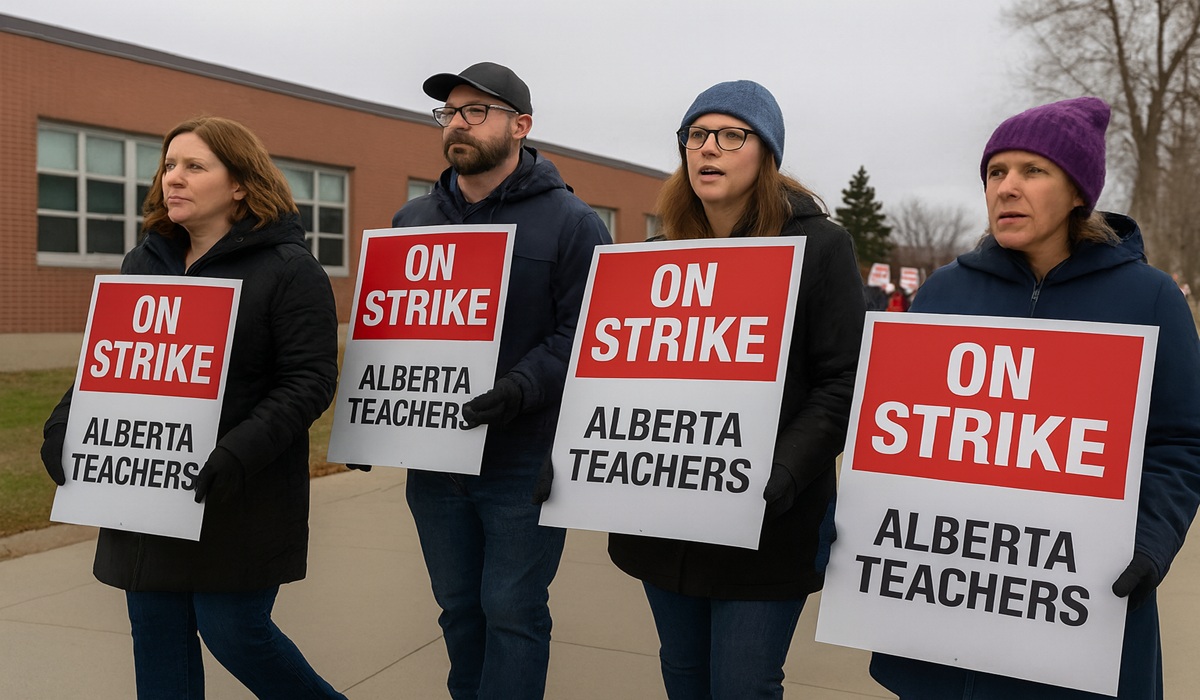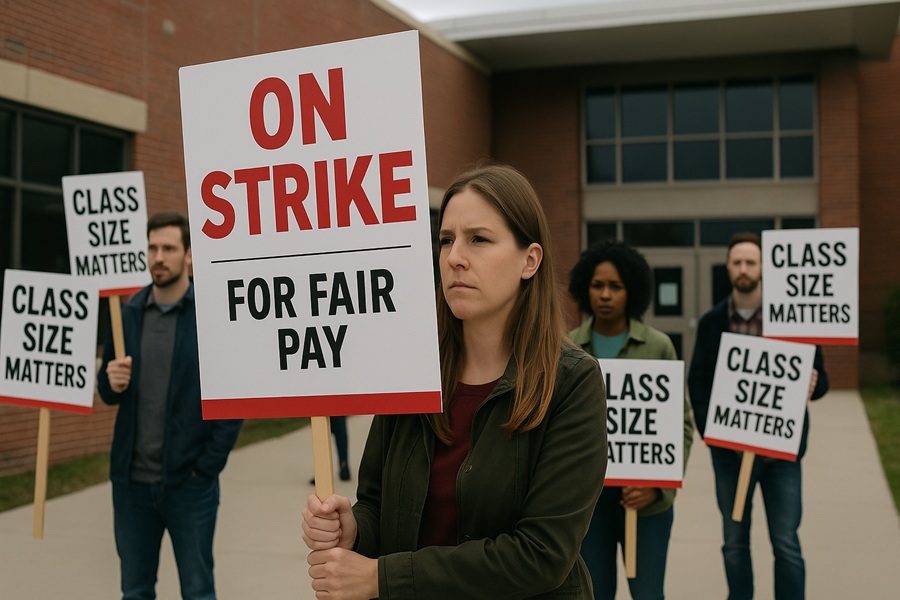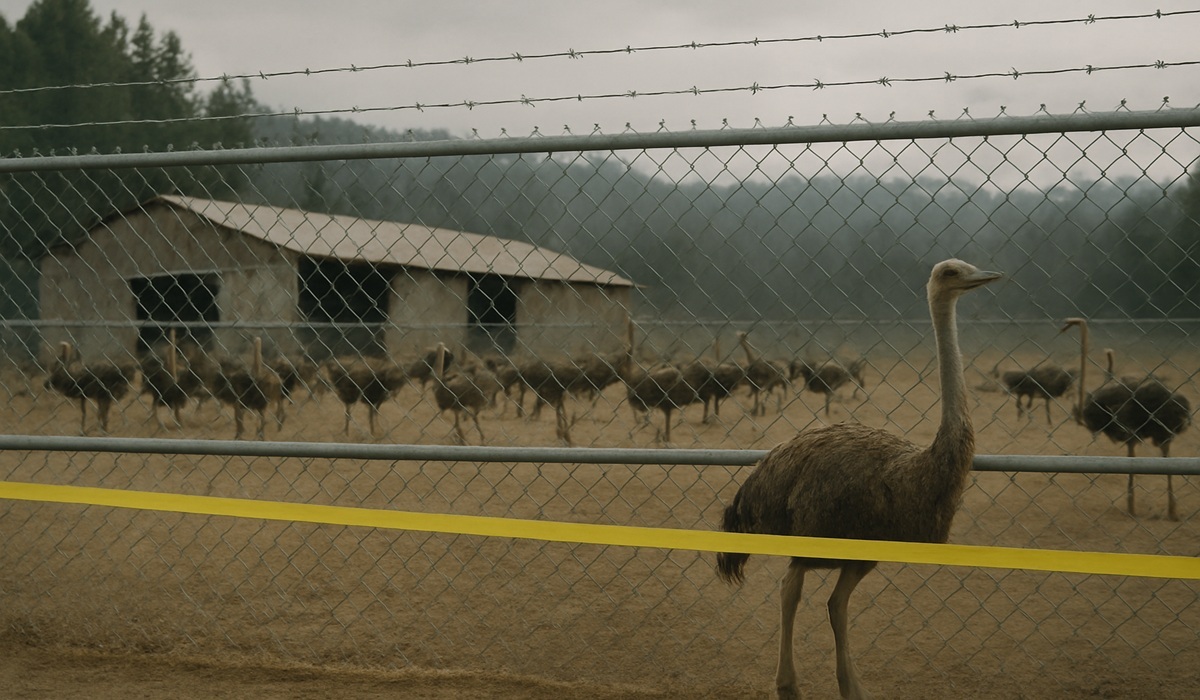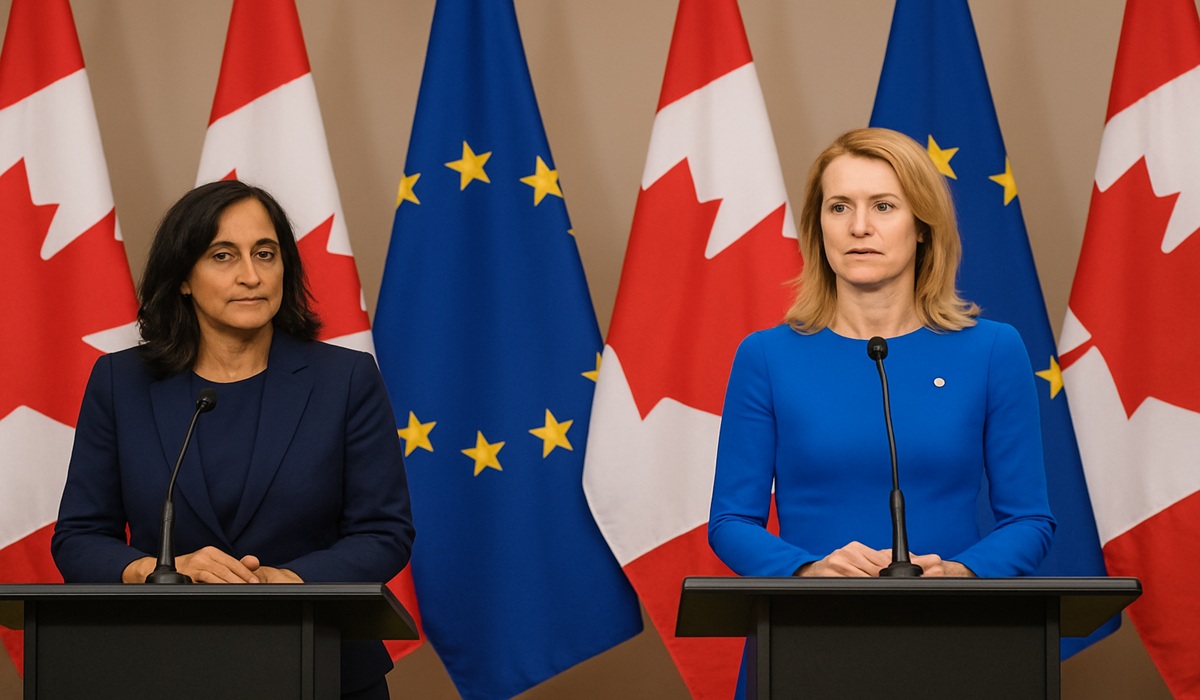Alberta Faces First-Ever Teachers’ Strike: A Province at a Crossroads
- Naomi Dela Cruz
- Canada
- October 7, 2025

Image Generated AI
For the first time in Alberta’s history, classrooms across the province are set to fall silent as teachers prepare to walk off the job. The Alberta Teachers’ Association (ATA) has served its official strike notice, with the action expected to begin Thursday. What began as a tense round of negotiations has now escalated into a historic showdown between educators and the government, one that will test the province’s commitment to public education, fair compensation, and classroom quality.
The teachers’ strike did not emerge from a single moment of discord but from years of mounting frustration. Alberta educators say they have reached a breaking point. They are demanding not just better pay but recognition of the growing challenges they face daily in the classroom. Teachers across the province report ballooning class sizes—some as large as forty-one students per room—and insufficient supports for children with special or complex needs. For many, this strike is about reclaiming the dignity of a profession that has been slowly eroded by chronic underfunding and political indifference.
At the heart of the dispute is compensation. Teachers argue that over the past decade, their pay has failed to keep pace with the rising cost of living. Inflation in Alberta has increased by well over fifteen percent in recent years, while teacher wages have grown only a fraction of that. The government’s offer of roughly three percent per year over four years—amounting to a twelve percent total increase—was rejected by the union, which said it barely restores what educators have lost to inflation, let alone compensates for the increased demands of the job. Many teachers have described the offer as an insult disguised as progress.
The government’s proposal also promised the hiring of three thousand new teachers and an additional billion dollars in funding for school boards to address class size pressures. On paper, this appears generous, but teachers say the plan lacks accountability and guarantees. There is no enforceable cap on class sizes, no binding commitment to ensure that the new funding actually results in smaller classrooms or more support staff, and no real remedy for the growing “complexity load” that teachers face as they try to accommodate students with a broad range of behavioural, emotional, and cognitive needs. In essence, educators argue that they are being asked to do more with less, while government investment continues to lag behind what is needed to sustain a healthy education system.
In Alberta today, classrooms bursting with forty students are no longer an anomaly but an alarming trend. Teachers say it’s nearly impossible to deliver quality education when the sheer number of pupils outpaces the time and attention a single educator can provide. Studies across Canada and around the world have long shown that smaller class sizes—typically between twenty and twenty-five students—yield better academic results, higher engagement, and lower dropout rates. In Finland, for example, which consistently ranks among the best education systems globally, class sizes in early grades average around twenty students. Even within Canada, provinces such as British Columbia and Quebec have taken measures to restrict classroom numbers and protect individualized learning. Alberta, once known for its strong education outcomes, is now struggling to keep up.

Beyond class size, the emotional and social burdens on Alberta’s teachers have reached critical levels. Educators are increasingly expected to fill roles that go far beyond teaching: social worker, therapist, coach, and after-hours volunteer. Many spend countless unpaid hours supervising extracurricular activities, mentoring students, and helping families navigate crises that extend far outside the classroom walls. Some teachers describe the system as “fractured,” where too few resources and too many expectations collide, leaving both staff and students overwhelmed.
Adding to the tension is a provincial government measure intended to soften the blow to families during the strike. Parents have been told they could receive thirty dollars per day, per child, to help offset childcare costs while schools remain closed. The move has been criticized as a political tactic—one that could cost the government millions of dollars each week the strike continues. Critics argue that the money would be better spent resolving the dispute directly by improving teacher pay and classroom conditions. If hundreds of thousands of families receive daily compensation, the cumulative cost could far exceed the amount required to meet teachers halfway in their demands. In this sense, the government’s approach appears less a solution and more a costly patch that fails to address the root problem.
How long this strike will last remains uncertain. There is no legal time limit, and neither side seems eager to back down. While Premier Danielle Smith has not ruled out back-to-work legislation, such a move would be politically risky. The federal Liberal government is unlikely to intervene, given its strained relationship with Alberta’s leadership. Any federal interference could be perceived as an attack on workers’ rights and would hand Premier Smith a convenient political scapegoat. For now, both sides are locked in a standoff that may continue until one feels the mounting weight of public opinion.
The longer the strike endures, the greater the impact on Alberta’s economy and reputation. Parents will struggle to find childcare, students will lose valuable instructional time, and teachers will forfeit wages as they fight for systemic reform. Yet the broader cost may not be measured in dollars but in trust—trust between educators and the government, between parents and policymakers, and between citizens and the institutions meant to serve them.
If the dispute drags on for weeks, Alberta could face hundreds of millions in additional expenses through subsidies, lost productivity, and eventual back pay once a deal is reached. That money, many argue, could have been more efficiently spent improving teachers’ salaries and hiring additional staff to relieve the pressure in classrooms. Instead, it risks being siphoned into temporary relief measures that do nothing to solve the underlying issues.
This strike is about more than wages. It represents a breaking point in a system where teachers feel undervalued, overworked, and unheard. They are the foundation of Alberta’s education system—professionals who dedicate their lives to shaping the next generation—yet they are increasingly treated as expendable line items in a budget. The crisis has forced Alberta to confront a question that has long been deferred: what is the true value of education, and are we willing to invest in those who deliver it?
In the end, this is not simply a labour dispute but a moral reckoning. Alberta’s teachers are making a statement that resonates beyond the classroom walls: education is not an expense, it is an investment. To neglect it is to undermine the very future of the province. As Thursday approaches and picket lines form for the first time in Alberta’s history, the world will be watching to see how long it takes before the province listens to the voices that have carried its children for generations.








